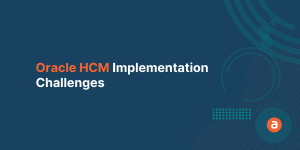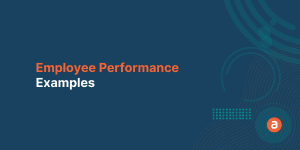The year 2021 has made many companies shift their focus from traditional training methods to modern remote training. Companies highly value training & learning which helps to reap the maximum benefits & outcomes from employees.
Learning and development training is a broad term that covers different kinds of employee learning.
What is Learning and Development Training?
Learning and development (L&D) training is a systematic program that helps your employees learn specific skills, knowledge & competency to improve their performance in a work setting.
L&D training focuses on employee growth and performance, rather than an immediate job role.
More than 68% of employees say that learning and development training is the most important company’s policy.
The goal of learning and development training is to change the individual or group behavior to improve their knowledge & insights to perform their tasks better.
In this post we will cover the:
Importance of Employee Training and Development
Effective training and development is a win-win situation for both the company and the employees. The following are the few benefits of effective learning & development training.
Employee Retention

The process of hiring, onboarding & training employees involves a lot of money. On the other hand, losing trained/experienced employees will cost you even more.
Research says employee turnover rate can cost businesses approximately 3.8 billion dollars monthly. This explains the importance of employee retention and engagement.
Introducing effective learning & development training program helps you to engage employees & that will in turn help you retain them. When your employees feel that the company is investing in their knowledge & skills, they are more likely to stay loyal.
Performance & Productivity

Continuous learning & training will bring in new ideas & innovation. Employees’ knowledge increases which in turn boosts productivity & performance.
Learning & development programs help employees grow from within and aids them to perform tasks effectively.
Morale & Culture

By providing Learning & Development training, you prove to your employees that you care about their wellbeing & carrier growth. This builds people’s confidence and brings your employees together within your organization or company.
The Learning & Development program cultivates job fulfillment and builds morale & culture amongst the workforce. Morale and positive culture encourage teamwork & collaboration which make your employees efficient & productive.
The top 5 ways for creating effective Employee Training & Development Program:
- Recognize Goals
- Perform Skill Gap analysis
- Identify the right training methods
- Measure the results
- Enable Self-Directed Learning
1. Recognize Goals
When developing your L&D training program, you must keep your overall business goals in mind. Identify the steps or milestones leading you to accomplish company goals. Recognize company goals and then create a training program to achieve success.

You must understand what you need to teach. Analyze different training methods. Identify the right training tool & materials.
Perform the L&D training program. And then monitor & evaluate your results. These are the five phases to develop the L&D program and you must remember company goals in each phase.
2. Perform Gap analysis
To implement a successful L&D training program, you must identify employee pain points, places for improvement, potential business impact, employee training needs, and more. The best way to get it done is to do a gap analysis.

The gap analysis report clearly shows where your employees stand today. Your employees are an effective source of information for identifying training & performance gaps.
Your employees might already hold things like knowledge of the processes, work, and procedures involved. So, they can provide valuable ideas & feedback you haven’t noticed or considered.
3. Identify the right training methods
While rolling out the Learning & Development training program, you must invest in tools that will make your employees work better and train them effectively. The right people coupled with the right training tool will be able to deliver the best outcomes.

The training method — the platform or medium through which you are going to teach your employees – has a direct impact on employee retention and their ability to implement newly acquired skills.
You must know about the best training methods out there in the market. Also, the current pandemic situation demands remote training. In-app Guidance is the most cost-effective training method to ensure business continuity.
4. Measure the results
Once you have defined the goals and identified the training method, start measuring data before & after training sessions.

The more the management can quantify employee training outcomes, the more effective the L&D training initiatives will be.
The best way to establish the value of the Learning & Development training program is to show Return on Investment (ROI) on employee training.
5. Enable Self-Directed Learning
Among your team identify fast learners. These high-potential learners will be able to learn & advance on their own. Make use of them!

Make the Learning & Development training process open and transparent. Show your employees where they can find the learning courses & materials they need. Instead of your traditional corporate training, leverage innovative tools that encourage self in app-learning.
Some key benefits of self-directed learning – increase the professional development speed, increases ROI, builds engagement and retention, etc.
Your focus must be on optimizing employee L&D programs and maximizing your returns from Learning & Development initiatives.
Learning & Development training strategies
- Define the L&D goals & metrics
- Identify and clearly define business goals. Ensuring these in each phase will automatically put the organization’s L&D training strategy in the right place.
- Gain executive support
- Bring in C-level executives to offer their support in the decision-making process. Address remote employee pain points and streamline the learning process to ensure business continuity.
- Understand what the employees value
- Remote employees face challenges in communicating what they want. Open up multiple channels and get feedback from your employees. Understanding the value & needs of each employee will foster effective learning & engagement.
- Provide on-going training
- The concept of one-time training is no more. Employees have shifted their focus to continuous learning objectives. Therefore, companies must keep employees on track and provide continuous learning & training.
- Know the desired outcome
- Measuring remote employee outcomes is tedious. Have metrics and leverage employee performance measurement tools to do the job. Measure employee productivity using tools and set the desired outcome levels.
That’s it for this guide on Learning & Development training. We have covered the importance of L&D programs and discussed effective L&D strategies that will work in organizations, different ways to make Learning & Development training effective.
To make effective Learning & Development, invest in the right tools – Digital Adoption Platform (DAP) is the most cost-effective employee training tool.













